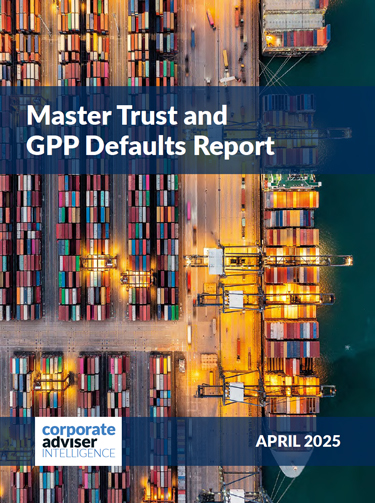Today’s group risk products are much more than a financial safety net, offering a broad range of health and wellbeing services that can be used whether or not someone’s claiming. But, with employers often having multiple versions of these services, some are asking whether it’s time to go back to basics.
Health and wellbeing services are included in everything from group life policies to cash plans, sometimes leaving employers and employees wondering which of the five or six virtual GPs or employee assistance programmes to pick. “It has been a bit like the scramble for sunbeds on holiday,” says David Williams, head of group risk at Towergate Employee Benefits. “As new health and wellbeing services were launched, the providers rushed to add more and more. It can be really confusing.”
Some advisers are already helping clients navigate these services, running audits of everything they have across their benefits and advising them on the most appropriate ones to select. “It is an important area for advisers as some services are better than others,” says Katharine Moxham, spokesperson for Group Risk Development (Grid). “It is frustrating to have this duplication but, when used effectively, these services can help to create a healthier, happier and more productive workforce.”
Adding value
Although there’s still a steady stream of new health and wellbeing services being launched, insurers are getting more strategic about what they add. “Insurers want to include services that deliver the right outcomes,” says Williams. “It’s a bit like early intervention brought forward: everything has to help employees stay healthy and reduce the risk of claims.”
As well as the potential to improve employee health, where these services are well-promoted, it can help to change the workplace culture. By demonstrating a proactive approach to health, employees will be more likely to reach out for help and support if they’re struggling.
This also leads to greater appreciation of the group risk benefits, and awareness of elements of the cover, such as early intervention on group income protection. “Awareness of early intervention is improving, which is a benefit for employees, employers and insurers,” says Chris Morgan, head of product and proposition strategy at Canada Life. “We’re always looking for ways to encourage more engagement with health and wellbeing services. They’re such an important part of the proposition: we’d only ever consider offering the financial element of income protection on its own where the employer already had the health and wellbeing services in place.”
Better together
While health and wellbeing services are regarded as an integral part of the group risk proposition, helping to encourage healthier lifestyles and reduce claims, there are plenty of arguments in favour of retaining the insurance too.
Williams says he’s had clients question why they need group income protection when there are no claims. “The health and wellbeing services can help reduce risk but people will still have heart attacks, cancer and strokes, no matter how many times they ring the employee assistance programme or check out health information,” he says.
Cutting out the insurance element also means clients miss out on the clinical expertise of the insurer. Health and wellbeing services may provide access to counselling to help an employee through a rough time; or support them while they start a new exercise programme, but they can flounder when an employee has a complex health issue stopping them from working.
Where these more complex cases do arise, the insurer can provide valuable support through early intervention, vocational rehabilitation and return to work programmes. As this support is independent, it can also factor in any workplace issues that might be stopping an employee working, such as bullying or a disagreement with a manager. “Insurance and health and wellbeing services need to be together,” adds Morgan. “We’re constantly looking for additional services that work even better but also ways to encourage greater usage.”
Supercharge the proposition
Communication is key to driving engagement with these health and wellbeing services. Once an adviser has identified the key set of added-value benefits, employers need to invest in a robust marketing campaign to ensure employees understand what’s available.
Insurers are also exploring ways to make it easier for employees to access information and services that are relevant to them. It’s not uncommon for employees to
have a screen full of health and wellbeing apps, especially where each service was sourced from a different provider.
James Walker, head of product and proposition for group risk at L&G, would like to see all these separate services brought together in one app. “This would give employees one place to go to find the health and wellbeing support they need,” he explains. “It could also use digital capabilities to signpost relevant content
and services.”
This integration could even go a step further. Morgan would like to see more work done to connect the preventative health and wellbeing services with insurer support such as early intervention and rehabilitation. “This would deliver better outcomes and really help the employee’s user experience,” he adds.
Obstacles and opportunities
There are potential obstacles though. Although health and wellbeing services may encourage an employee to reach out to their line manager if they’re struggling with a health issue, the responsibility for referral to the insurer lies with the employer. The opportunity to do this at the earliest possible point may be missed where communications aren’t great between employee and employer.
Confidentiality is another major stumbling block. Williams says that although a health and wellbeing service provider may be aware that an employee could potentially become a group risk claim, the most they can do is suggest they speak to their employer. “The service providers can supply aggregated information, which could highlight any common health issues, but they can’t alert the insurer or employer,” he adds.
Employees’ willingness to reach out to their employer for help could be about to be boosted too. Morgan points to the government’s Keep Britain Working Review. “This is looking at what employers and the government can do to tackle economic inactivity due to long-term ill-health and disability,” he adds. “Having this focus should help to raise awareness of the workplace support that’s available.”
The hidden costs of unbundling
Unbundling the health and wellbeing services from group risk insurance is a simple way to ensure that employers get what they want but it has some significant financial drawbacks.
First, there’s the cost. “We can negotiate keener rates on these services than if an employer went direct,” explains James Walker, head of product and proposition for group risk at L&G. “Even if we offered the health and wellbeing services separately, it would be more expensive for the employer than having them included within a group risk product.”
Savings for employers could go beyond these cost-efficiencies too. Where employees engage with the wellbeing services, it could encourage healthier behaviours and reduce future claims. “If claims experience is lower, this could be reflected in lower premiums,” adds Walker.
There are also tax implications when employers get to pick and mix the add-on benefits. Katharine Moxham, spokesperson for Group Risk Development (Grid), explains: “If you unbundle the two, there would be a P11d liability on the health and wellbeing services. When they’re included within a group risk product they help to mitigate risk and aren’t taxed as a benefit in kind.”
This could leave employees paying tax on the value of these benefits and employers facing an additional national insurance charge.





